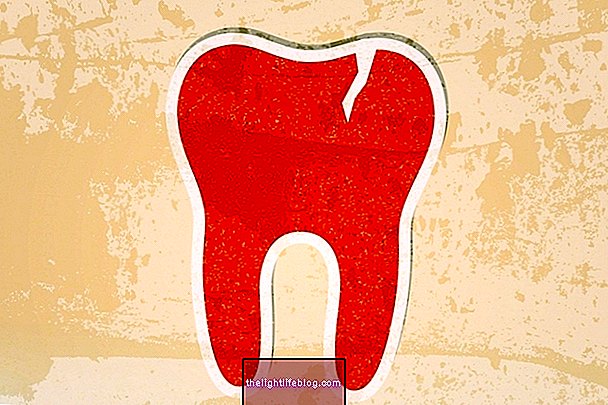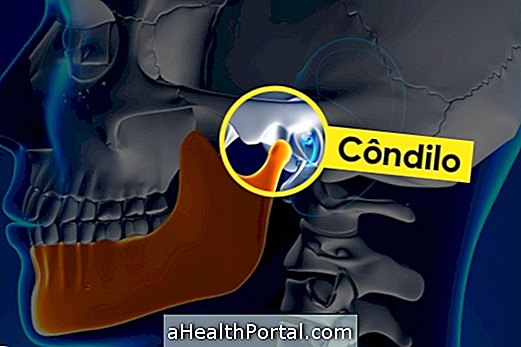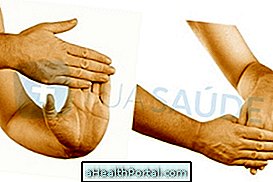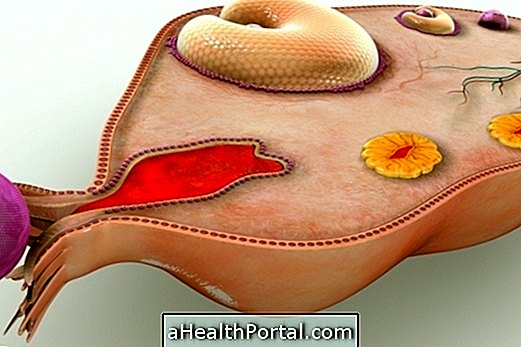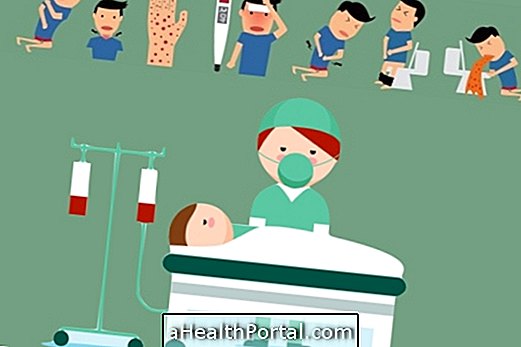Tooths usually begin when the baby stops sucking exclusively, around 6 months, and is an important developmental milestone. The baby's first tooth can be born between 6 and 9 months of age, however, some babies may reach 1 year and still have no teeth, which should be evaluated by the pediatrician and also by the dentist.
The baby's first full dentition has 20 teeth, 10 on top and 10 on bottom, and they must all have been born by age 5. From this stage the milk teeth can begin to fall, being changed by the definitive teeth. After 5 years it is also common that the molar teeth, deep in the mouth, begin to be born. Know when to drop the first teeth.
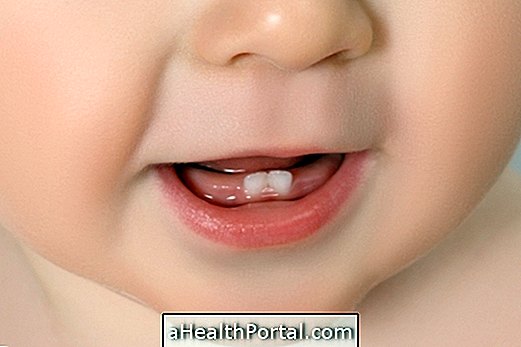
Order of birth of milk teeth
The first teeth appear from six months and the last teeth up to 30 months. The order of birth of the teeth are:
- 6-12 months - Lower incisor teeth;
- 7-10 months - Upper incisor teeth;
- 9-12 months - Upper and lower lateral teeth;
- 12-18 months - Upper and lower first molars;
- 18-24 months - Upper and lower canines;
- 24-30 months - Second and lower second molars.
The incisor teeth cut the food, the canines are responsible for sticking and tearing food and molars by crushing food. The order of birth of the teeth occurs according to the changes in the type and consistency of the food given to the baby. Also know how the baby's feeding is at 6 months.
Symptoms of teeth eruption
The eruption of the baby's teeth cause pain in the gums and swelling causing difficulty in eating, which causes the baby to drool too much, put fingers in the mouth and all objects besides crying and getting irritated easily.
In addition, the eruption of the baby's first teeth may be accompanied by diarrhea, respiratory infections and a fever that is not usually related to the birth of the teeth but with the new eating habits of the baby. Learn more about the symptoms of birth of the first teeth.
How to relieve the discomfort of tooth birth
The cold reduces inflammation and swelling of the gums, reducing discomfort, ice can be applied directly to the gums, or give the baby cold foods such as apples or cold carrots, cut in large size so that it does not choke he can handle, although this must be done under surveillance.
Another solution may be to gnaw on an appropriate teething ring that can be purchased at any pharmacy. Here's how to ease the pain of the birth of baby teeth.
See too:
- How To Brush Baby's Teeth
